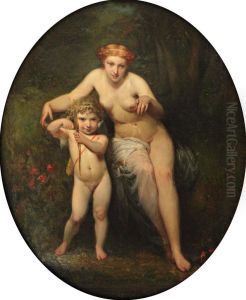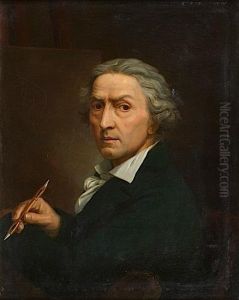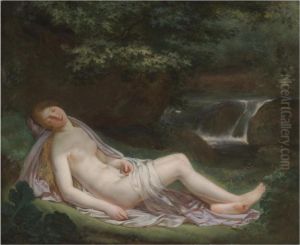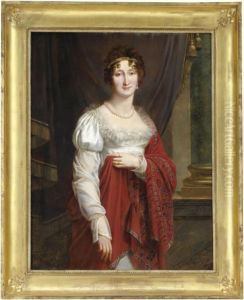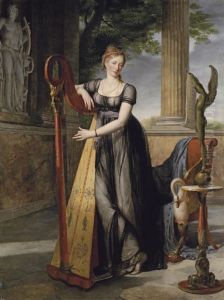Antoine Ansiaux Paintings
Jean-Joseph Ansiaux, known as Antoine Ansiaux, was a historical and portrait painter born on July 6, 1764, in Liège, which was then part of the Prince-Bishopric of Liège in the Holy Roman Empire and is now in Belgium. He showed an early talent for painting, and this led him to study under the renowned artist Joseph-Benoît Suvée. Suvée himself had won the prestigious Prix de Rome in 1771 and was an influential figure in the world of art, providing Ansiaux with an excellent foundation in the techniques and styles of neoclassical painting.
Ansiaux continued his studies in Paris at the Royal Academy of Painting and Sculpture, which was one of the foremost art institutions of the time. He honed his skills in the academic tradition, focusing on mythological and historical subjects which were popular in the late 18th and early 19th centuries. His works were characterized by their classical composition, clear lines, and a focus on the human form, in line with the neoclassical ideals.
During his career, Ansiaux received recognition and accolades. He exhibited his work at the Salon, the official art exhibition of the Académie des Beaux-Arts in Paris. His paintings often drew upon themes from ancient history and mythology, resonating with the tastes of his contemporaries who admired the grandeur and moral seriousness of classical antiquity.
Ansiaux's reputation was such that he was appointed as a professor at the Academy of Fine Arts in Liège, where he influenced a new generation of artists. His teaching and his art contributed to the cultural life of Liège, helping to foster a vibrant artistic community. Antoine Ansiaux died on September 15, 1840, in Liège, leaving behind a legacy as one of the significant painters of the neoclassical movement in Belgium. His works are preserved in various museums and collections, offering insight into the artistic trends and cultural values of his time.
